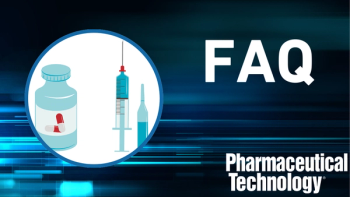Editor’s Note: This article was published in Pharmaceutical Technology Europe’s July 2022 print issue.
- Pharmaceutical Technology, July 2022
- Volume 46
- Issue 7
Trends in International Arbitration: The Fallout from COVID-19
As a result of the disruptions caused by the COVID-19 pandemic, global arbitration has adapted to a ‘new normal’.
The COVID-19 pandemic has disrupted supply chains, greatly increased the costs of transportation and raw materials, and thrown companies into a myriad of operational and financial difficulties. Life sciences companies have struggled to obtain raw materials to maintain production and supply of critical drugs and pharmaceutical products. They have also taken measures to minimize the impact of these disruptions and protect their position in case of claims of contractual non-performance. All of these issues have the potential of leading to disputes.
International arbitration is an efficient and effective way to resolve cross-border disputes in a neutral and private setting, under flexible and internationalized rules, and with worldwide enforcement of arbitral decisions. Foreign investors can also turn to international investment arbitration for remedies when governments engage in improper intervention and thus disrupt or expropriate investments. International arbitration is particularly well suited to adapt to the challenges posed by the COVID-19 pandemic—its private nature allows parties to keep sensitive business disputes confidential and allows for greater procedural flexibility than national court litigation, as evidenced by the arbitration community’s seamless transition to virtual hearings and paperless proceedings.
It is expected that this prompt adaptation to the post-COVID ‘new normal’ will reinforce the advantages of international arbitration over litigation and result in its continued and even increased popularity in the future. In addition, certain unique trends are likely to emerge in the context of the pandemic. By anticipating these trends, life sciences companies may be able to avoid common pitfalls, and take timely action, to protect their position in the event of a dispute.
Arbitration trends
A number of trends are emerging with respect to life sciences disputes that are anticipated to continue for the foreseeable future, including in particular:
- A greater number of disputes arising out of global supply chain disruptions, and use of the pandemic as a defence to contractual non-performance
- An increase in disputes over earn-out clauses and pre-closing covenants in M&A transactions
- A rise in investor-state claims brought by investors against states for breach of international investment protection agreements
- More insolvent parties in arbitrations, which pose particular challenges
- An increase in third-party funding of significant claims in international arbitration
- The continued use of efficient procedures by arbitral tribunals, including paperless proceedings and remote hearings.
Supply chain disputes
The pandemic-related host of protective measures taken by countries around the world and the scale-down of businesses adversely affected the availability of raw materials and the ability of life sciences companies to maintain production and supply products to their customers. Some governments pushed for new domestic sources of supply or directed exporters to prioritize local or national needs over fulfilling their contractual obligations to overseas customers. Increased transportation costs and lower transportation capacities further aggravated the situation. These supply chain disruptions can have serious consequences for life sciences companies and for the availability of critical drugs, pharmaceuticals, and medical devices in the market.
There have already been disputes over suppliers’ inability to deliver raw materials and over complaints from customers about inferior products entering the market. It is expected that these disputes will continue in the near future, given the global interconnectedness of supply networks and the varying responses by governments to further COVID-19 outbreaks. We also expect to see disputes arising as life sciences companies take further measures to navigate these disruptions, including restructuring their supply networks, seeking price adjustments, and resorting to defences such as force majeure or hardship.
M&A disputes
Parties in M&A transactions have included more earn-out clauses to address the economic uncertainties arising from the pandemic. Earn-out arrangements are usually intended to bridge the gap between diverging valuations of the target company by the buyer and the seller at the time of closing—in addition to the upfront purchase price, the seller of a business receives further pay-outs if and when the target company achieves certain agreed performance targets over an agreed period of time after closing. Thus, the seller trades the certainty of a lower upfront payment for a potential higher pay-out in the future. However, earn-out arrangements frequently result in disputes over valuation issues and the often ambiguous causes of underperformance. Earn‑out disputes are frequently resolved through international arbitration, and an increase in such disputes is anticipated.
Pre-closing covenants constitute another area of risk of disputes. These covenants seek to protect the buyer against damage to the business of the target company between signing and closing, by requiring the target to operate ‘in the ordinary course of business’. Many measures taken by governments to fight COVID-19 outbreaks led to temporary closure of operations, impacting regulatory compliance and lowering profitability of the target company. Buyers could seek to avoid the completion of transactions by relying on these pre-closing covenants, especially given the reduced appetite for investment caused by the pandemic.
Investor-state disputes and protection of IP
The COVID-19 pandemic accelerated the need for innovation and development of critical drugs and vaccines. At the same time, there is increased tension between the protection of legitimate intellectual property (IP) rights and the need to expand access to such IP in the public interest. In some instances, governments led the charge to make critical drugs and vaccines widely and cheaply available, even to the extent of overriding existing licensing arrangements and underlying patent protection.
Notably, since October 2020, developing countries such as India and South Africa have been spearheading the proposal for the World Trade Organization to adopt a waiver of the Agreement on Trade-Related Aspects of IP Rights (TRIPS Agreement) for COVID-19-related vaccines and pharmaceuticals. If an agreement to waive the TRIPS Agreement were adopted, governments would be able to legitimately deny IP protection to certain COVID-19 products, resulting in their mass production without any compensation to the original developer. This would have massive consequences for the expected return on investment of life sciences companies developing these products.
In addition, life sciences companies may be impacted by other measures taken by governments in the countries in which they have invested, including restrictions on movement of people and goods, closure of facilities for the physical conduct of business, and the selective grant of state aid. When their investments have been negatively affected by such government action, foreign investors may be able to assert claims under bilateral investment treaties (BITs) for breach of investment treaty standards such as full protection and security, fair and equitable treatment, and non-discrimination. More investor-state arbitrations commenced by life sciences companies are expected to occur in response to pandemic-related measures.
Disputes involving insolvent parties
In the early months of the COVID-19 pandemic, the disruption of business and economic activity caused by the pandemic was widely expected to lead to massive surges in corporate bankruptcy. Two years into the pandemic, these fears do not appear to have materialized, with the number of bankruptcy filings actually lower in some countries than in the years immediately preceding the pandemic (1,2). However, the relative stability of the corporate financial landscape may at least partly be attributed to the host of measures taken by governments to mitigate the effects of the pandemic, including fiscal stimulus, debt forbearance programmes, and the easing of thresholds to declare bankruptcy. The effects of withdrawing these bailout measures can already be seen in some countries, such as Switzerland, which saw a marked increase in bankruptcy filings after their withdrawal (3).
As governments across the world continue to phase out protective measures, it is anticipated that arbitral tribunals will more frequently need to address the issue of insolvent parties, and the possible consequences for an arbitration. National insolvency legislation often seeks to centralize the resolution of disputes with the insolvent entity, resulting in conflicts with arbitration proceedings, which are inherently private. For instance, insolvency laws may exclude arbitration as a forum for resolving disputes with an insolvent company or require termination of existing arbitration proceedings. Addressing these complex legal issues may increase the time and cost of the proceeding.
Third-party funding of claims
Third-party funding of significant claims is now a common feature in international arbitration and has become available in jurisdictions that previously were subject to regulatory restrictions. The increased availability of third-party funding creates opportunities not only for impecunious claimants, but for all companies who may consider utilizing such options to help manage their litigation budgets, especially for high value claims.
The decision to resort to third-party funding requires careful weighing of its pros and cons. For example, while third-party funding offers the benefits of limited cost exposure and shifting the risk of pursuing an expensive arbitration with an uncertain outcome to the funder, it means giving up a significant portion of any amounts recovered. Funded parties also cede to the funder some degree of control over the arbitration, including with respect to settlement proposals. The use of third-party funding may further spur an application for security for costs (i.e., a direction to the claimant to obtain a bank guarantee or other security to cover the costs incurred by the respondent to defend itself in the arbitration) in the event that the claimant is unsuccessful.
Efficiencies in arbitral procedure and potential related challenges
With the advent of the COVID-19 pandemic and related travel restrictions, the international arbitration community was quick to adapt and innovate to ensure that arbitration disputes remained on track and progressed efficiently. Notable examples of this flexibility include the transition to virtual/remote hearings and paperless proceedings. This can be contrasted with the difficulties faced by many national court systems that became blocked as a result of pandemic restrictions and are now facing a backlog of cases.
Parties should be aware, however, that virtual hearings may raise certain due process risks that could lead to challenges to arbitral awards. These challenges could be based on the decision to hold virtual hearings over the objections of one party, concerns about inadequate access to technology, logistical and scheduling issues relating to time zone differences, and the risk of influencing witnesses during their testimony. However, the high threshold for setting aside an arbitral award means that only the most egregious due process violations result in a successful challenge, as confirmed by recent court decisions addressing these issues (4,5).
The relatively smooth transition to, and widespread adoption of, virtual hearing formats have now made the use of remote procedures a standard feature of arbitration even after pandemic restrictions have been lifted. Depending on the particular needs of the arbitration, life sciences companies can benefit from these efficiencies in terms of time and cost savings and contribute to a lower environmental footprint.
Arbitration tips
The below key tips are offered to help life sciences companies navigate the challenges arising out of the COVID-19 pandemic and protect their position in the event of a dispute:
- In case of disputes relating to supply chain disruptions, life sciences companies should proactively manage the dispute and coordinate their responses to effectively protect their position towards upstream and downstream partners. Where appropriate, consider seeking interim remedies to prevent serious harm and/or using available procedural tools to prevent parallel arbitrations with different partners relating to the same dispute.
- Life sciences companies should carefully negotiate contractual provisions in M&A transactions, and in particular earn-out clauses, to avoid confusion and frustration of contracts on account of pandemic-related difficulties.
- Life sciences companies with international investments should monitor changes to the local regulatory landscape. Where their investments are adversely affected by government intervention, investor-state dispute settlement under BITs may provide a potential avenue for redress.
- Life sciences companies should carefully monitor the financial standing and risk of insolvency of their counterparty before initiating legal proceedings, and consider taking recourse against additional respondents to counter any insolvency risk.
- Life sciences companies should consider increasingly available options to use third-party funding to help manage litigation budgets.
- Life sciences companies should continue to adopt appropriate remote hearing and paperless arbitration procedures on a case-by-case basis even as COVID-19 restrictions are lifted.
References
1. M. Martos-Vila and Z. Shi, “Bankruptcy Filings During and After the COVID-19 Recession,” Business Law Today (18 March 2022).
2. N. Stef and J.-J. Bissieux, Int. Rev. Law Econ., 70, 106063 (2022).
3. C. Beutler, “Bankruptcies Rise as Coronavirus Bail-Outs Phase Out,” Swissinfo (4 April 2022).
4. Eaton Partners v. Azimuth Capital Management IV, Case No. 18 Civ. 11112 (ER) (District Court of the Southern District of New York, 24 Sep. 2019).
5. Austrian Supreme Court, Case No. 18 ONc 3/20 (Austrian Supreme Court, 23 July 2020).
About the authors
Tanya Landon and Dorothee Schramm are both partners, Global Arbitration, Trade and Advocacy at Sidley Austin—an international law firm.
Article details
Pharmaceutical Technology Europe
Vol. 34, No. 7
July 2022
Pages: 29–31
Citation
When referring to this article, please cite it as T. Landon and D. Schramm, “Trends in International Arbitration: The Fallout from COVID-19,” Pharmaceutical Technology Europe 34 (7) 2022.
Articles in this issue
over 3 years ago
Getting Proactive with Pharma Packagingover 3 years ago
Advancing Accessibility through Point-of-Use Manufacturingover 3 years ago
Formulating Biologics: A Learning Curveover 3 years ago
Automating Biopharma Manufacturingover 3 years ago
Challenges to Formulation Development for Highly Potent APIsover 3 years ago
Prefilled Syringes Show Strong Growthover 3 years ago
The European Union’s New Pharmaceutical Strategy for EuropeNewsletter
Get the essential updates shaping the future of pharma manufacturing and compliance—subscribe today to Pharmaceutical Technology and never miss a breakthrough.






